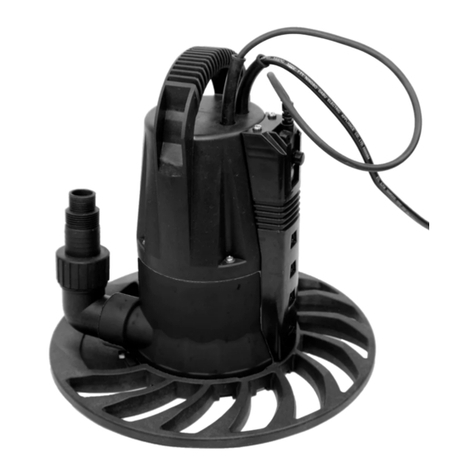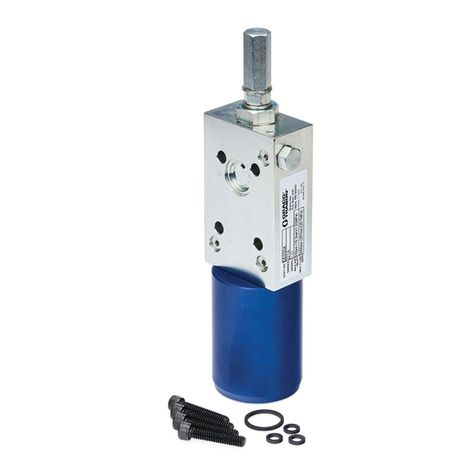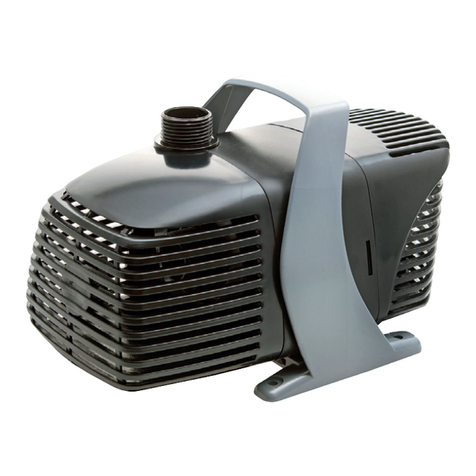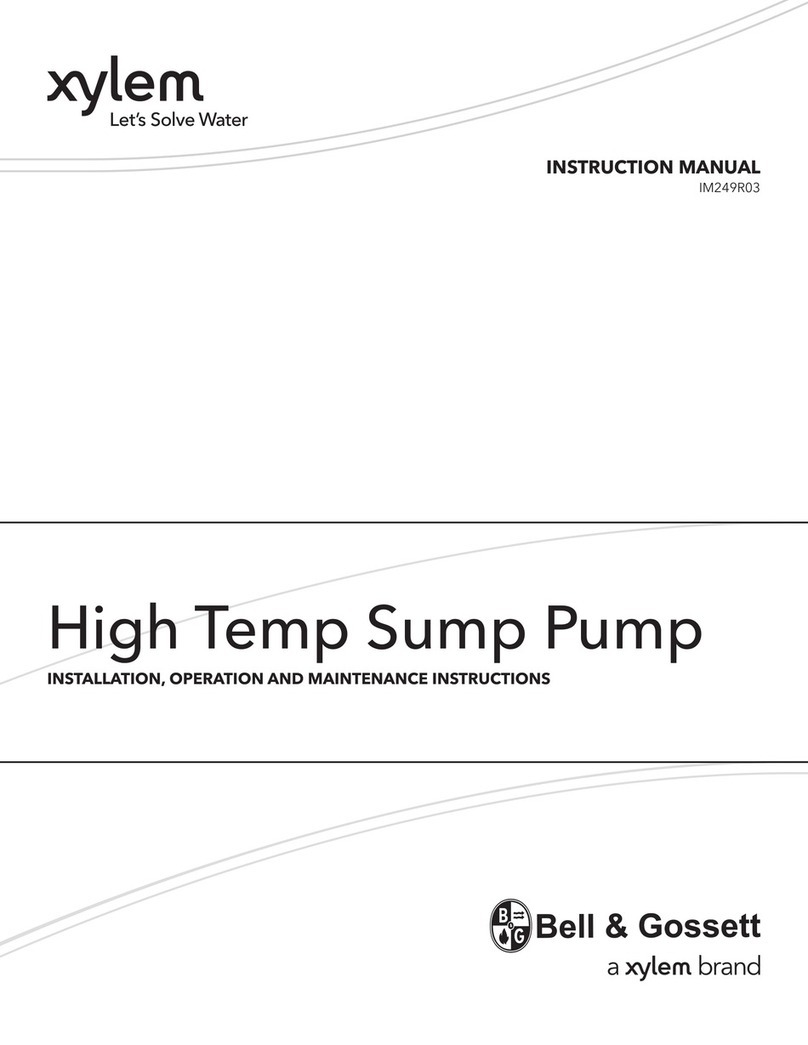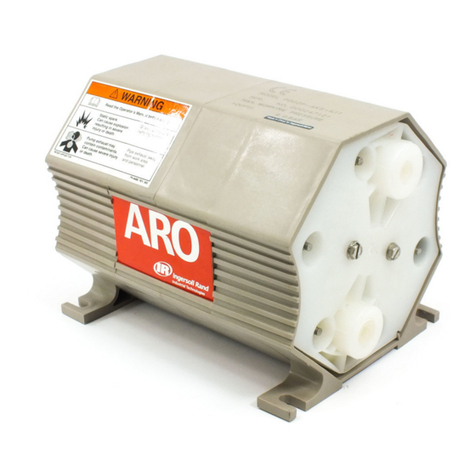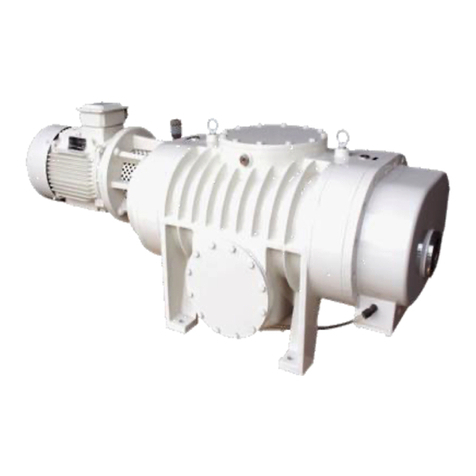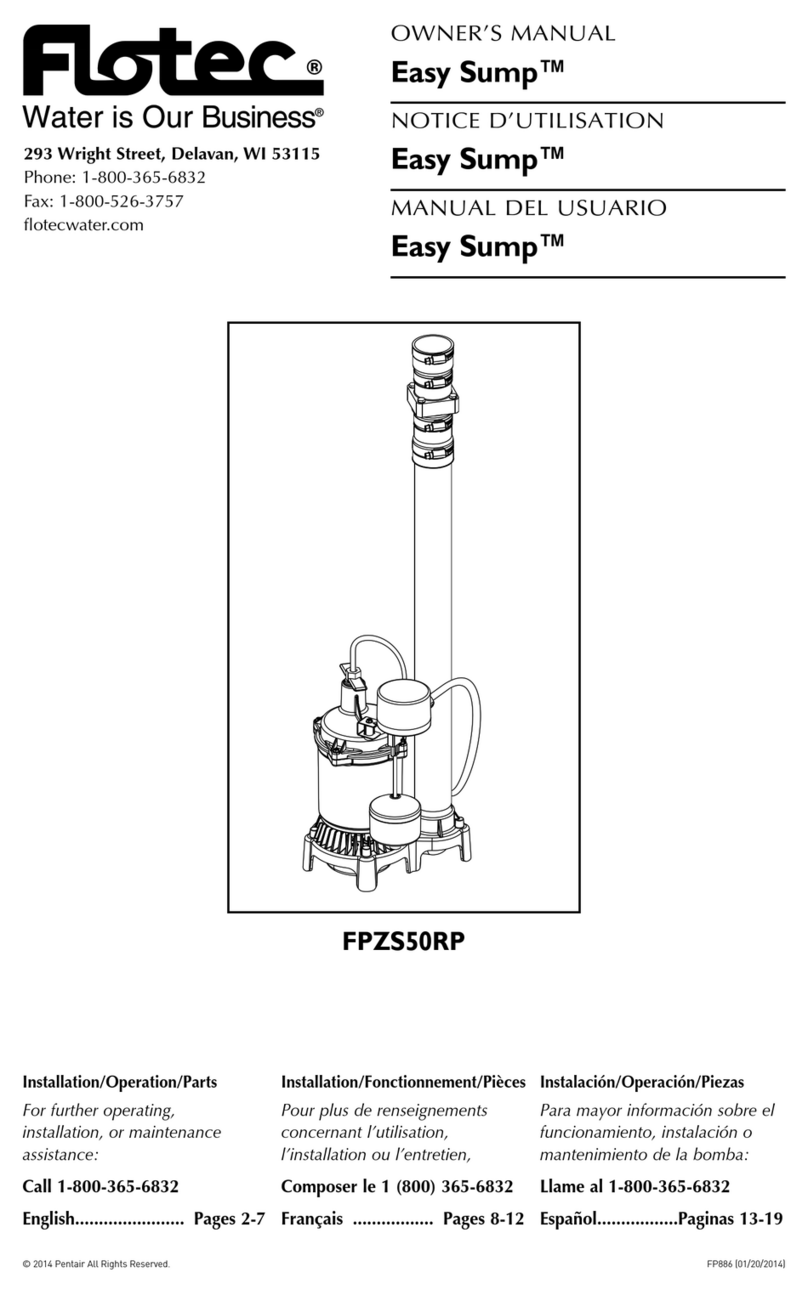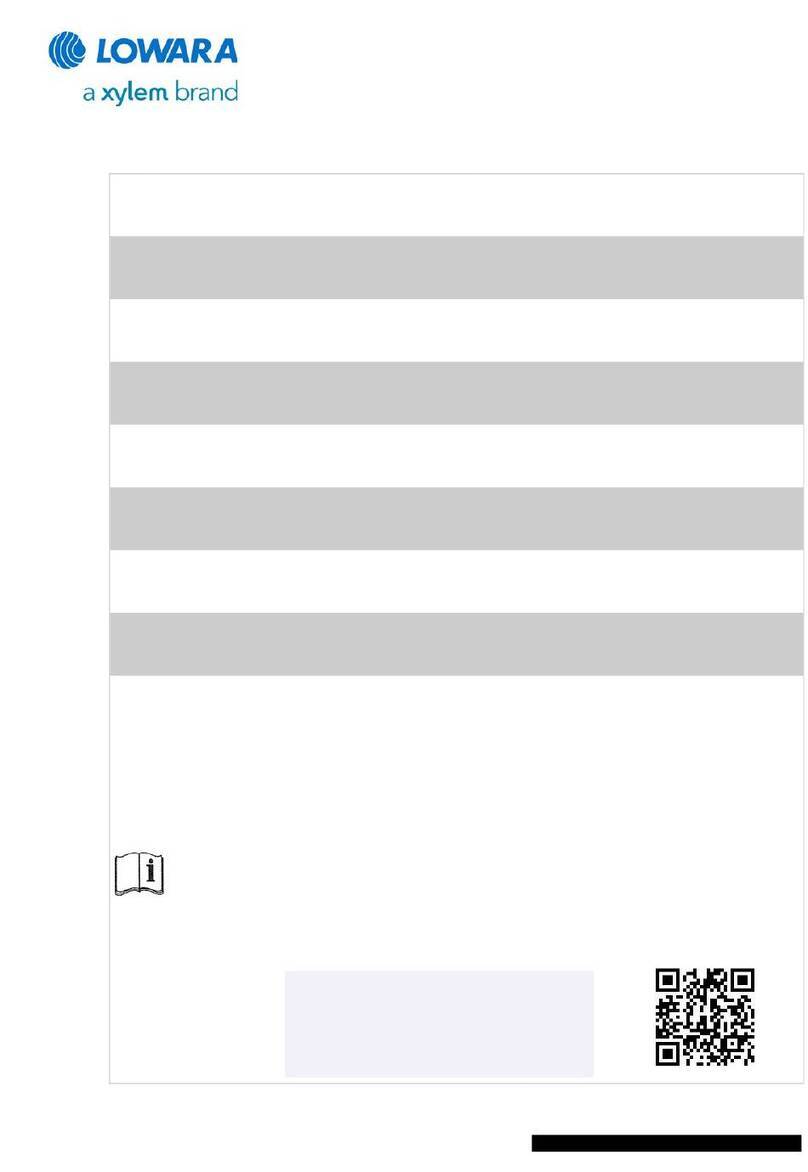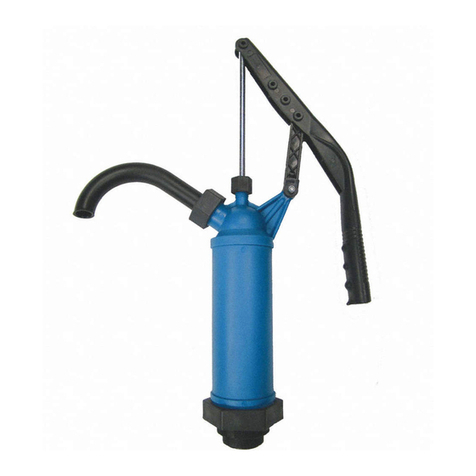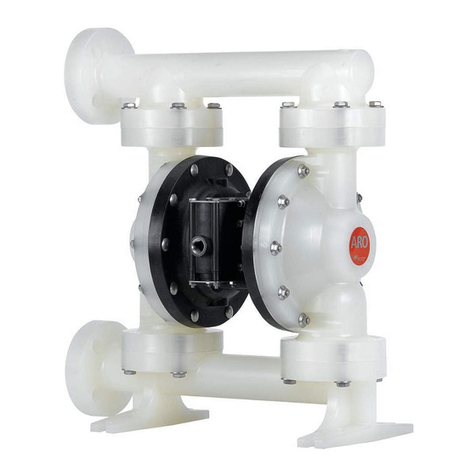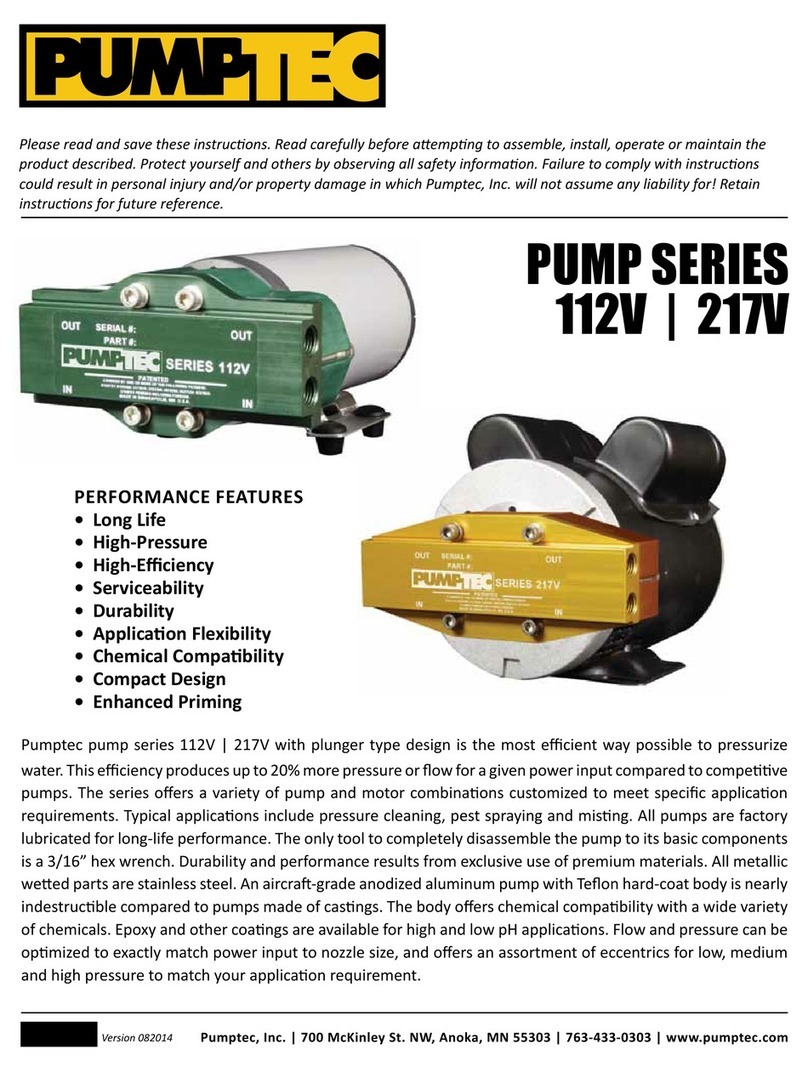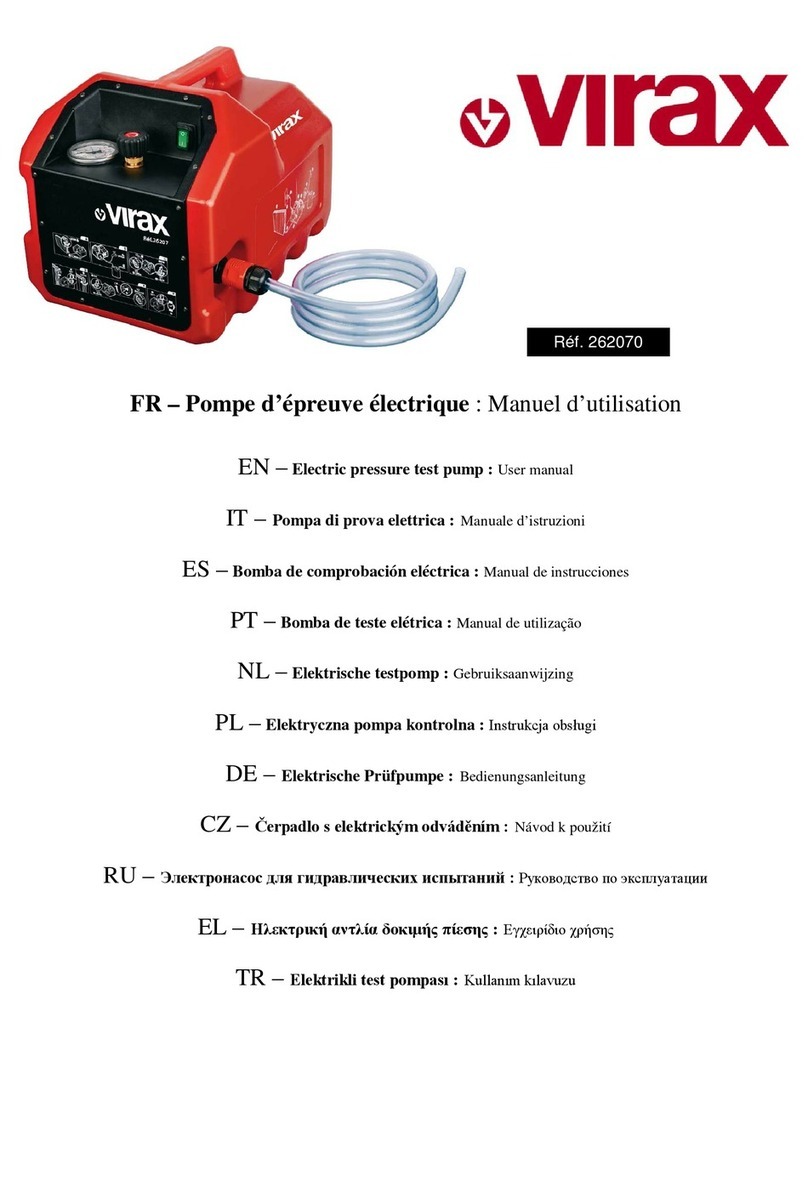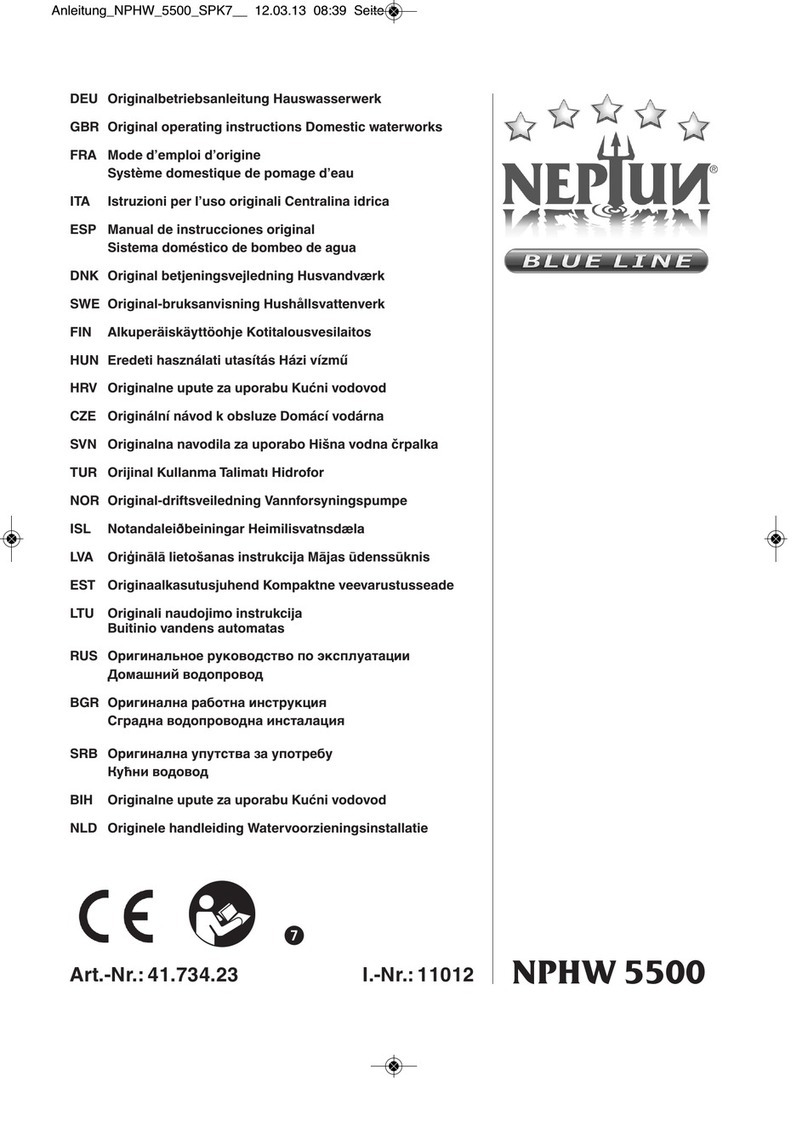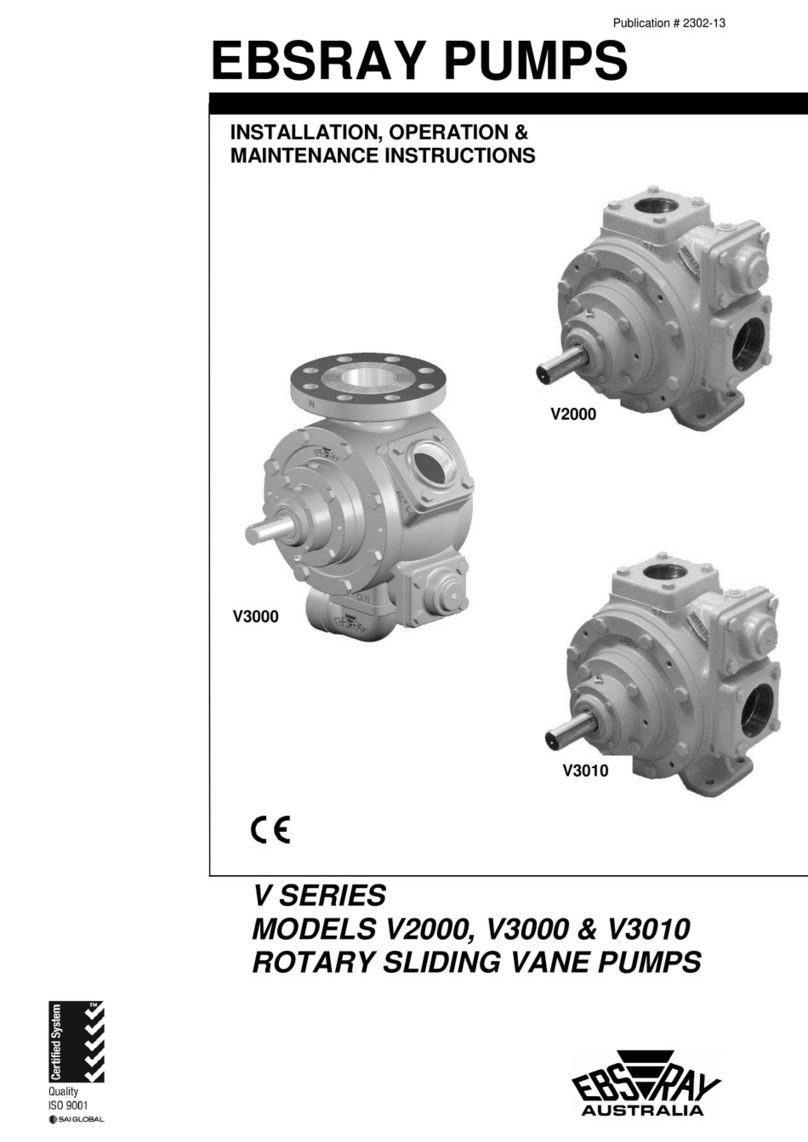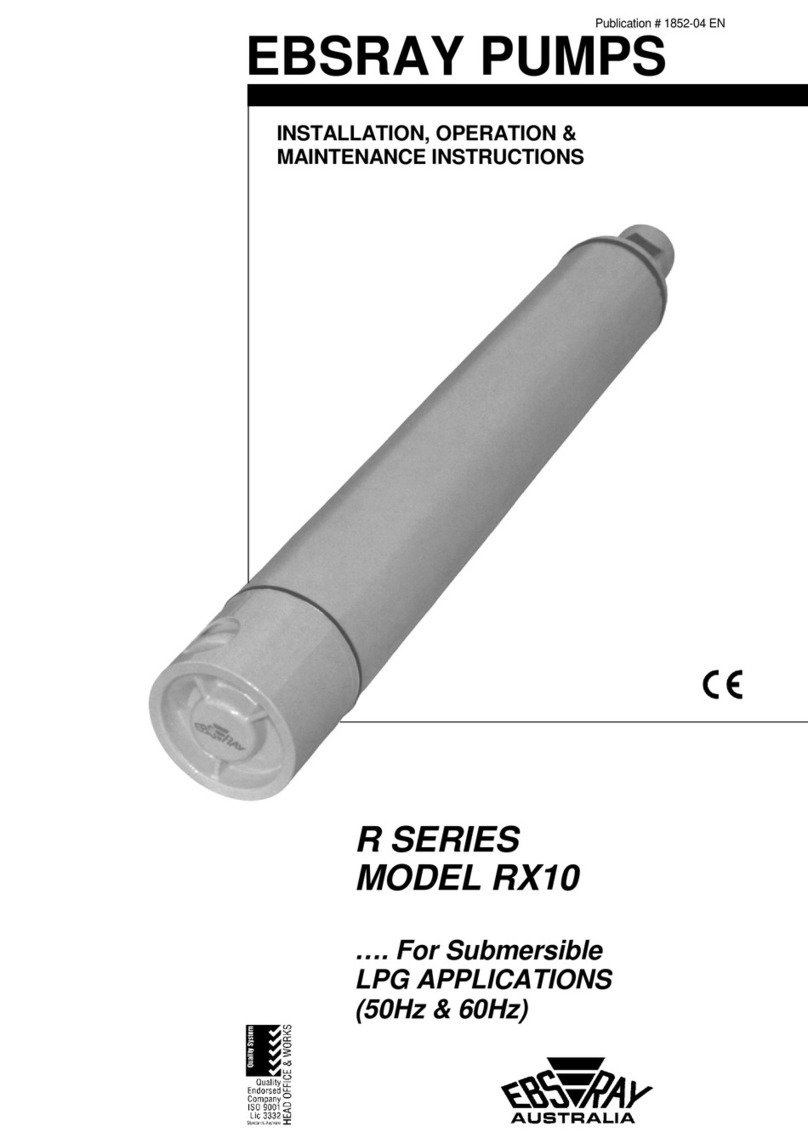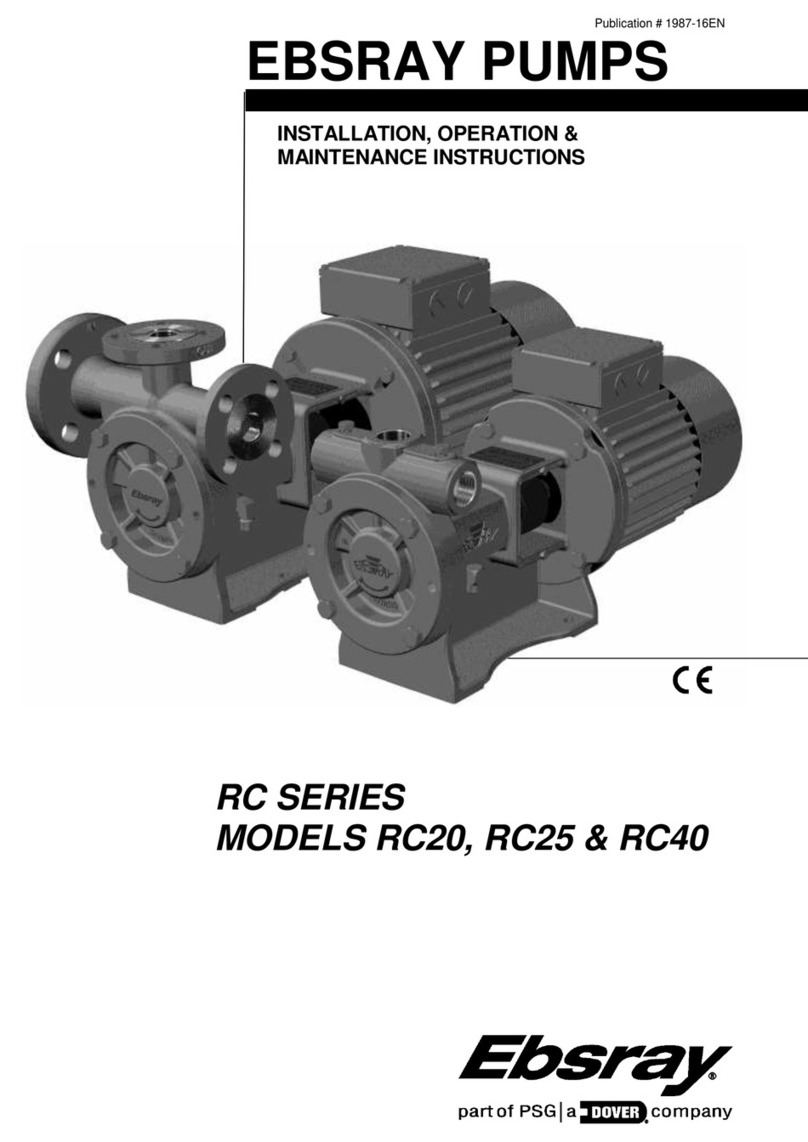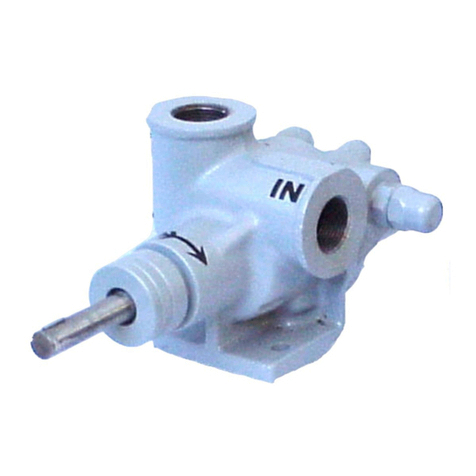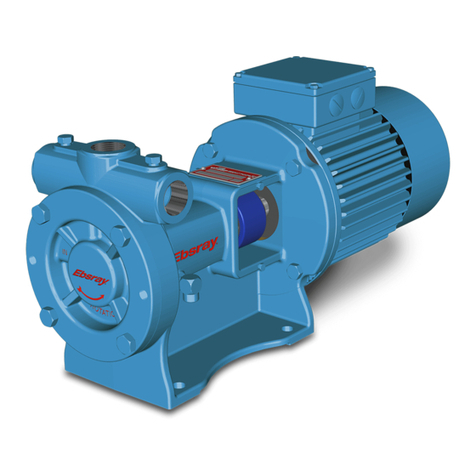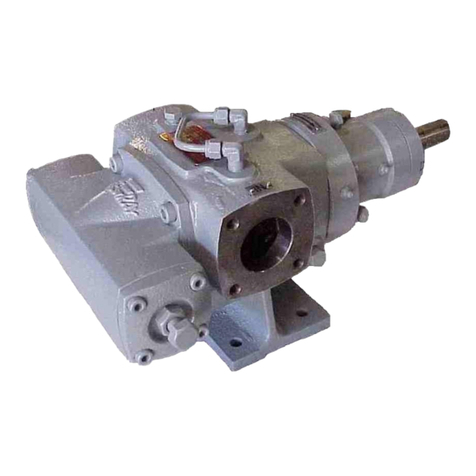
Publication No.: 2753-20
7
5.5 IMPELLER & MECHANICAL SEAL REPLACEMENT
The pump should rest on its inlet flange.
1. Remove the Cover’s eight cap head setscrews (6). If
required fit two of the setscrews to the tapped jacking
holes.
2. Remove the Cover (2), remove the Cover O-ring (4),
discard and replace with lightly lubricated new O-ring.
NOTE:
The cover is a very neat fit into the pump body. Do not use
excessive force to remove the cover. If the cover gets stuck,
gently rock loose or gently tap loose with a soft mallet.
NOTE:
The impeller is ‘floating’ on the shaft for most applications
For certain applications, Ebsray specifies that the Impeller is
to be locked to the shaft via a socket set screw in the impeller.
The locked impeller variants are shown with an “L”in the
model number - example R80-C33B-1FL1-Y1V2R-P0
The following instructions are for a floating Impeller.
Refer to Section 6.2 for removal and replacement of the locked
Impeller.
3. Remove the Impeller (2) andImpeller Key (8). If required,
use 2 off M8x75mm setscrews as jacking screws in the
Impeller’s taped holes.
4. Remove the Circlip (58). At this point you can remove the
dynamic element by using two of the four cartridge cap
head setscrews (57A)and fitthem to the back of the Seal
Sleeve (42) (part of the dynamic element (56)) and use
as extraction screws. If replacing the entire seal follow
steps below.
5. Remove the cartridge cap head setscrews and screwtwo
of them into the Mechanical Seal Cartridge’s (57) tapped
jacking holes. Jack the Cartridge and/or Mechanical Seal
Assembly (56) off the shaft.
6. Remove the dynamic element (41, 42, 45, 45A, 46
assembled) and Seal Seat (40) from the Cartridge.
Remove the O-rings (57B & C) from the Cartridge and
discard.
7. Fit a small screwdriver or punch to
the Cartridge’s holes and gently tap
the Lip Seal (55) out (See Figure 4).
8. Clean the Cartridge using non-
residual contact cleaner or similar.
9. Loosely fit the new Lip Seal to the
Cartridge (with the lip facing out,
See Figure 5). Using the piece of 1-
1/4 inch pipe as a drift, gently tap the
Lip Seal into the Cartridge. Ensure
that the Lip Seal is flat (flush) by
checking the holes in the back of the
Cartridge.
10. Fit the smallest new O-ring (48) to
the Seal Seat and lightly lubricate.
11. Without removing the protective cover, press the Seal
Seat into the Cartridge with fingers (ensuring complete
and square engagement).
12. Remove the protective cover from the Seal Seat, clean
with non-residue contact cleaner.
13. Fit the new O-rings (57B & 57C) to the Cartridge and
lightly lubricate. The smaller cross section O-ring goes
on the back.
14. Lightly lubricate the Cartridge O-rings, Lip Seal and bore
of the Bearing Housing (20).
15. Aligning the four holes of the Cartridge with the tapped
holes in Bearing Housing, fit the Cartridge to the
Bearing Housing.
16. Fit the four Cartridge cap head setscrews with ‘Loctite
243’ or similar and tighten to 7N-m (5ft-lbs).
17. Remove the protective cover from the dynamic
element and clean face with non-residual contact
cleaner. Lightly lubricate the new internal Shaft O-ring
(46) and lubricate seal face with clean light machine
oil.
18. Aligning the dynamic element pin
with the Impeller’s keyway, fit the
dynamic element onto the shaft
and rest gently on the Seal Seat’s
face.
19. Loosely fit the Circlip (58) onto the
shaft.Using the 1-1/4 inch pipe as a
press tool, snap the circlip into
place. Ensure the Circlip is correctly
seated (See Figure 6).
20. Fit the new Impeller Key (8) to the keyway. Aligning the
Impeller keyway to the shaft key, fit the Impeller to the
shaft.
NOTE:
Correct angular orientation of both the cover and bearing
housing is guaranteed as one of the bolt holes is 1.5 degrees
out of pitch. In other words if all eight bolts do not start in the
Body’s tapped holes the angular orientation is not correct.
21. Gently fit the Cover (2) to the Body(1).
Do not force the cover into the body.
If it gets stuck, gently rock loose or
gently tap it in with a soft mallet.
22. Do a final check to ensure the Cover
O-ring (4) is correctly located (See
Figure 8), then hand fit the eight cover
cap head setscrews (6). Torque
setscrews to 100Nm (75 ft-lb’s)
